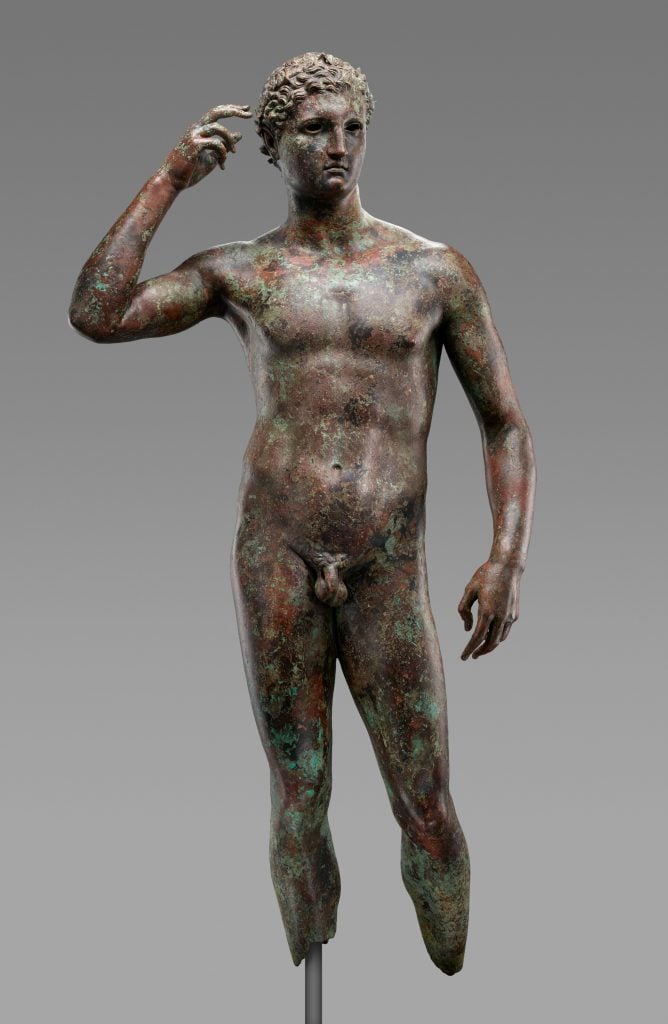Law & Politics
A Court Rules the Getty Museum’s Prized Ancient Greek Statue Belongs to Italy
Italian authorities tried and failed to claim the statue before the museum acquired it in 1977.

Italian authorities tried and failed to claim the statue before the museum acquired it in 1977.

Adam Schrader

The European Court of Human Rights has determined that Italy is the rightful owner of an ancient Greek statue currently held by the J. Paul Getty Museum in Los Angeles, in a years-long dispute between the two parties.
Experts believe the bronze statue, Victorious Youth, was created in Greece around 300–100 B.C.E. by an unknown sculptor and transported to what is now Italy by Romans some years later. The ship carrying it is believed to have sunk, preserving the statue at the bottom of the Adriatic Sea until it was found by Italian fishermen in international waters in 1964.
However, Italian officials claim that the statue was illegally smuggled out of the country before it was bought by the Getty Museum in 1977 for about $4 million. Before the Getty Museum acquisition, Italian authorities had unsuccessfully tried to claim the statue from a German art dealer—a factor that came into play in the decision by the court’s seven judges.
“Owing, in particular, to the Getty Trust’s negligence or bad faith in purchasing the statue despite being aware of the claims of the Italian State and their efforts to recover it, the confiscation order had been proportionate to the aim of ensuring the return of an object that was part of Italy’s cultural heritage,” the court ruled.
At the time of the Getty Museum’s purchase, Italian authorities made multiple attempts to retrieve the work in transit including investigations undertaken domestically and by Interpol, and petitions to authorities in the United States and the U.K., through which the statue had travelled. Artnet News could not find whether Greece has ever tried to lay claim to the sculpture by press time.
On May 2, the court reached its judgment after the Getty Museum appealed an earlier 2018 decision from Italy’s Court of Cassation that had ordered the sculpture to be confiscated and returned, upholding a previous decision from a lower Italian court.
The ECHR panel found that the legal basis for Italy’s confiscation order was sound because Italian authorities had “reasonably demonstrated that the statue had been part of Italy’s cultural heritage and also had legally belonged to [it].”
The jurisdiction of the ECHR to handle the case was established because the Getty Museum had argued that its human rights had been violated by Italy’s campaign to get the Victorious Youth statue back under the laws of the European Union.
However, the next steps in the dispute are not clear as the United States is not a party to the ECHR and so its rulings are not binding. Italy had asked the U.S. Attorney General’s Office to enforce the confiscation order in 2019 but that “is still pending,” per the ECHR.
“If the U.S. court were to enforce the judgment, then it’s going to open a huge can worms for American museums,” Patty Gerstenblith, an expert in cultural heritage law at DePaul University, told the Associated Press.